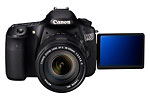 Canon has announced a new mid-range digital SLR, positioned between the entry-level T2i / 550D and the EOS 7D. As a step-up, enthusiast digital SLR, The new Canon EOS 60D follows mostly in the footsteps of the 20D, 30D and 50D, which it is replacing. It shares the same 18-megapixel resolution, 9-point auto focus, sensitivity range and basic video specs as the T2i; but the build and design are closer to the 50D and 7D – i.e., main dial control by the shutter release and the Quick Control Dial on the rear for aperture or exposure compensation control. However, there’s one design change that makes the new 60D stand out – it’s the first digital SLR from Canon with a “vari-angle” tilt-swivel LCD. This is an important feature for videographers, landscape photographers and studio photographers who work on a tripod – even if they don’t know it yet. I’ve been using digital SLRs with tilt-swivel LCDs for a few years now and I’ve found them very useful in the field and even more valuable in the studio.
Canon has announced a new mid-range digital SLR, positioned between the entry-level T2i / 550D and the EOS 7D. As a step-up, enthusiast digital SLR, The new Canon EOS 60D follows mostly in the footsteps of the 20D, 30D and 50D, which it is replacing. It shares the same 18-megapixel resolution, 9-point auto focus, sensitivity range and basic video specs as the T2i; but the build and design are closer to the 50D and 7D – i.e., main dial control by the shutter release and the Quick Control Dial on the rear for aperture or exposure compensation control. However, there’s one design change that makes the new 60D stand out – it’s the first digital SLR from Canon with a “vari-angle” tilt-swivel LCD. This is an important feature for videographers, landscape photographers and studio photographers who work on a tripod – even if they don’t know it yet. I’ve been using digital SLRs with tilt-swivel LCDs for a few years now and I’ve found them very useful in the field and even more valuable in the studio.

Key Canon EOS 60D Specs And Features:
- 18-megapixel CMOS sensor
- DIGIC 4 processing
- ISO 100-6400, extended to ISO 12,800
- 1080p video at 24, 25 and 30 frames per second; 60 frames per second at 720p
- New 3-inch vari-angle LCD with 3:2 ratio and 1-million dot resolution
- 5.3 frames per second burst rate (68 high quality JPEG / 16 RAW)
- Auto focus system – 9 points, all cross-type
- Dedicated Live View start/stop button (movie mode accessed via Command Dial)
- External microphone input
- New video sound levels control and wind filter
- Artificial horizon display
- Exposure compensation + /- 5 stops
- Integrated Speedlite Transmitter wireless flash control via pop-up flash
- 96% viewfinder
The tilt-swivel LCD isn’t the only new feature on the EOS 60D. Canon also combined the joystick control that was on the back of the 50D with the Command Dial and they’ve added new consumer-friendly in-camera processing tools. The 60D can process RAW files and save a JPEG in the camera. It also has new creative filters and can do in-camera resizing.
The new EOS 60D looks like a solid upgrade for T1i, 40D, 50D and other older DSLR owners. The 18-megapixel sensor in the 7D and the T2i is pretty good and a real improvement over the 50D. I’m not sure the 60D uses the exact same sensor but I think we can expect it to produce comparable image quality (Canon EOS 7D studio sample photos). It should appeal to photographers who want or need a better build than the T2i offers – the body has an aluminum chassis and polycarbonate shell with weather sealing comparable to the EOS 50D. It also has a more robust buffer, hence the 5.3 frames-per-second vs. the T2i’s 3.7 FPS burst rate. I think 5 FPS is the minimum, for serious action photography so the 60D will make a good lightweight, inexpensive body for beginning sports photographers or a backup for working pros. More serious action sports photographers should still look to the 8-FPS 19-point AF EOS 7D or the 10-FPS 45-point AF EOS-1D Mark IV. But photographers who want a relatively inexpensive, lightweight pro-level body should take a close look at the new 60D. Yes – you can get more if you spend more. But the EOS 60D and even the T2i will get the job done for most photographers, most of the time. If I didn’t already own an EOS 7D, I’d be first in line to replace my old 50D with the new 60D. And I sure wish my 7D had that tilt-swivel LCD!
The Canon EOS 60D is scheduled to be in stores in late September. The suggested retail price for the body alone is $1099. The 60D will also be available in a kit with the Canon EF-S 18-135mm f/3.5-5.6 IS zoom lens for $1399. Canon is also introducing new 70-300 f/4-5.6L IS, 300mm f/2.8L II, 400mm f/2.8L II and 8-15mm f/4L zoom fisheye lenses along with 2 updated tele-extenders this fall. There will also be a new battery grip for the EOS 60D for $270.
Official Canon EOS 60D Press Release >>
Related Content:
Canon Digital SLR User Reviews
All Canon User Reviews
Canon Cameras Forum
All Canon News & Articles
Canon Cameras Web Site
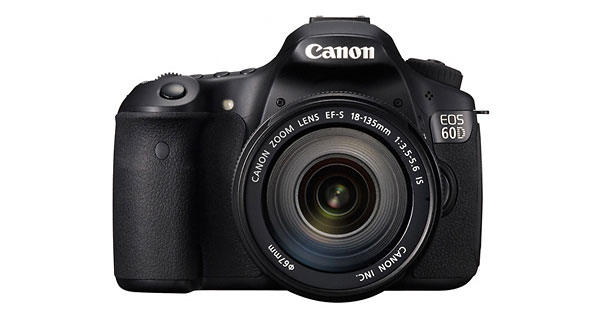
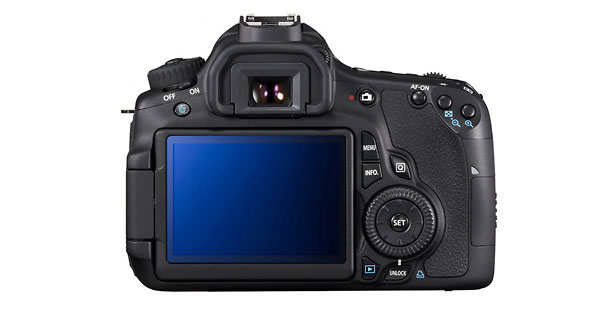
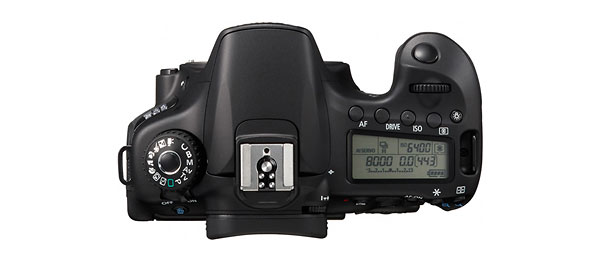
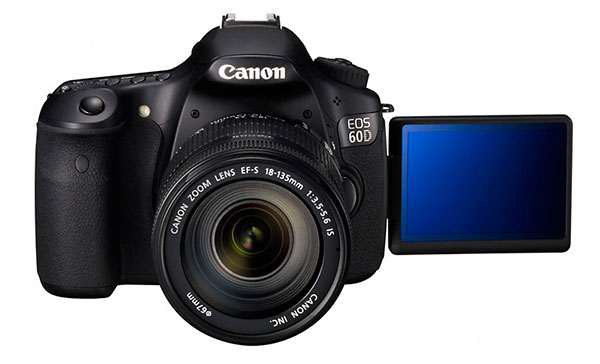
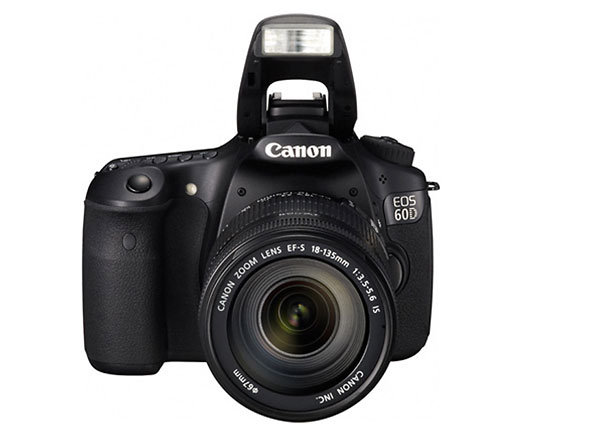


Thank God I bought the EOS 50D 4 months ago. It’s heavier and faster thus serving my purposes better. Granted the new 60D includes video but I never wanted to be a videographer. Yes the tilt shift LCD is a great addition; however not worth giving up the heavy body and faster frame rate of 50D in exchange.
In fact, after releasing the 7D Canon didn’t have any slot for 60D. Therefore, it seems like a compromise model in order to satisfy the guys on waiting list dying for the it. They might find it little disappointing as the difference between this model and entry level EOS 550D is insignificant. Nevertheless, Canon has filled in a gap not created by themselves but by the slogans of processions on numerous threads.
Some would love positioning it against Nikon D90 which is unjustified. EOS 50D already beat D90 in every department except movie that the Canon model lacked. Mentioning D90′s limping movie function as a feature is pointless. If movie is 60D’s main objective, it surely has homed in on target. For DSLR users, 50D still remains the midrange prosumer champ.
Thanks for the comment, Quazi. However, I disagree with a lot of what you’ve said – especially regarding the quality of the 50D. I owned a 40D, promptly upgraded to a 50D and was a little disappointed. The 50D *was* fast, but that’s about all. I didn’t think the image quality was an improvement over the 40D and that’s what I really wanted. The one thing that really impressed me was the new LCD. When the 7D was announced I got a pre-production tester from Canon and after using it I promptly put in a pre-order for my own 7D. I have been very pleased with the 7D – in fact, I think it’s my favorite Canon DSLR since I bought the original EOS 1D.
I also had a chance to use the Nikon D90 and D5000 while I owned the 50D and I thought both of those cameras had better image quality. Nikon is kiling it on the image quality front right now. To say the 50D is better than the D90 is way off, in my opinion. I’ve been recommmending the D90 over the 50D since I bought my 50D.
As for the EOS 60D – I think it’s a very nice camera and I think the slot between the T2i / 550D and the 7D is a good one. Not everyone needs or can afford the 7D. And some people need a little more than the T2i (sports photographers like myself need more speed). I also happen to love tilt-swivel LCDs. I’ve used them on the Olympus DSLRs and the Nikon D5000 and I’ve found them invaluable for tripod landscape work and tabletop studio photography – especially studio photography. Then there are the people who own older cameras and have yet to upgrade. Those are the people who will most benefit from the EOS 60D.
Since you’re a 50D owner I totally understand where you’re coming from. I agree the EOS 60D is a hard selll if you own a 50D. The image quality from the 18-megapixel 550D/7D/60D sensor *is* better. But you may not need better image quality. Regardless, in the big picture I think the 60D is a very good camera and there are lots of photographers who can and will benefit from it. Personally, I’m considering upgrading from the XSi I currently use in the studio to the 60D. I think it will make a very worthy replacement.
Thanks again for your comment. A little debate on the merits of these cameras is good for people who are trying to decide what to buy
Thank you Photo-John for your updates. Obviously u r a much more experienced and knowledgeable photog whereas I’m just a hobbyist.
As I said, I’m a nature photographer and a substantial portion of my shots cover wildlife. In this case IQ is never unimportant but probably is of secondary importance. For shooting wildlife an action body is a must. As per my understanding EOS 50D is Canon’s beginner action camera followed by 7D and the flagship 1DMkIV. Indoor photography, portraiture or studio photography are not my cup of tea. Therefore, I don’t see how Nikon D90 poses as a better camera to such photographers with its features! According to my knowledge; Nikon’s action bodies start from D300. Please correct me if I’m wrong and would certainly love to be enlightened by experts.
If I did portraiture or studio stuff; I would choose either 5DMkII or 1DsMkIII. I’m not Canon crazy photog; but I love their lenses and that’s what keeps me glued to this brand despite being unhappy with some of their bodies and high pixel mania.
I’m really excited by the the articulated screen.
Not enough to abandon my 1DSmkII or 1DmkIIN for the 60D, though it might make a backup.
But by the prospect of a 1DmkV with this screen.
That might be the killer feature, together with the lighter weight and longer battery life, to upgrade.
Although if there came a 7DmkII with this screen, it might make it into my bag as a backup camera.
You just mention in passing the new mkIII extenders.
There are quite a few important changes there.
http://cpn.canon-europe.com/content/product/lenses/efmarkiiiextenders.do
“The join between the extender and lens and camera body has also been made tighter. This makes the unit feel more firmly attached and helps to minimise dust and water ingress. The lens mount also features more screws to provide a more robust mounting point.”
Something I definitely appreciate, as I feel the body moving on the rear of the 300mm and 1.4x extender.
“To ensure lens optical performance and autofocus performance remains high, both extenders feature an integrated processor to transfer all focus and lens information back to the camera. Compared to the Mark II Extenders, these new Mark III Extenders will offer increased AF performance with all EF lenses.”
Good, because I was disappointed with the AF speed of the 2x mkII and the 100-400L or 300 f/2.8 L even the 1.4x mkI was better.
And they have the new fluorine water/oil repellent coating (see-through teflon?) so cleaning may be easier too.
All in all, good reasons to trade in my mkI and mkII extenders.
I think Canon EOS 60D has more advanced features as compared to previous versions of Canon. I can feel the picture quality of 18 megapixel CMOS sensor. I am grateful to you………
Digital Camera Photo Recovery
Can we see differences between images shot with 12 mp camera and 18 mp camera? Any link please.
It is the update version of Canon EOS 50D with the advanced key features as compared to the old one.
Photo recovery
I just got my 60D a few days ago and it’s a great camera. Easy to use and the articulating screen is awesome. Perfect for anyone upgrading from the a Rebel series. One of the main reasons I decided to upgrade to the 60D was the card format. I have tons of SD, SDHC and SDXC cards, and it would be a waste to reinvest in CF cards. The are available at your local Best Buy. Try it out!
Another top review! Not sure there’s a clear place for this camera to fit into the Canon range but it’s a lovely little thing. We made a review from the Canon stand at Photokina and got an interview with their European product specialist, who had some interesting views about the future of Canon’c commitment to HDSLRs.
http://convergeevents.co.uk/2010/09/converge-events-canon-60d-video-hdslr-review/
I’m still doing wildlife/bird photography with my EOS 50D with satisfaction. Don’t need to upgrade. Some of my friends are using EOS IDMkIV despite not being pro. Well I don’t envy them; but cannot help wondering why!
I also enjoy doing landscape/nightscape photography. Here I don’t need fast frame rates, high shutter speeds or ISO. All I need is good IQ. As I always shoot in RAW, I rely confidently on my old horse EOS 450D for such shots. With its appropriate resolution (12 mp) on 1.6 crop sensor; it produces the highest quality mandated by such category. One such image was recently bought by a dominant local cell phone company for 1 year. They made mammoth bill boards with that image and now displaying at different points of the city. Needless, to mention, I never approached anyone for promotion – they randomly selected it from my flickr photostream and then contacted me for the purchase.